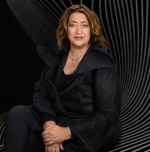Stellar Vision of Zaha Hadid
>
The Royal Institute of British Architects (RIBA) has 24 September 2015 announced that the globallyrenowned architect Dame Zaha Hadid will receive the 2016 Royal Gold Medal, the first woman to be awarded the prestigious honour in her own right.
Given in recognition of a lifetime’s work, the Royal Gold Medal is approved personally by Her Majesty The Queen.
Zaha Hadid is internationally known for her built, theoretical and academic work. Each of her dynamic and innovative projects builds on over thirty years of revolutionary experimentation and research in the fields of architecture, design and urbanism.
In 2004 Zaha Hadid became the first woman to be awarded the Pritzker Architecture Prize. She has twice won the UK’s most prestigious architecture award, the RIBA Stirling Prize: in 2010 for the MAXXI Museum in Rome, a building for the staging of 21st Century art, the distillation of years of experimentation, a mature piece of architecture conveying a calmness that belies the complexities of its form and organisation; and the Evelyn Grace Academy, a unique design, expertly inserted into an extremely tight site, that shows the students, staff and local residents they are valued and celebrates the school’s specialism throughout its fabric, with views of student participation at every turn.
Indeed her work, though full of form, style and unstoppable mannerism, possesses a quality that some of us might refer to as an impeccable ‘eye’: which we would claim is a fundamental in the consideration of special architecture and is rarely satisfied by mere ‘fashion’.
And surely her work is special. For three decades now, she has ventured where few would dare: if Paul Klee took a line for a walk, then Zaha took the surfaces that were driven by that line out for a virtual dance and then deftly folded them over and then took them out for a journey into space. In her earlier, ‘spiky’ period there was already a sense of vigour that she shared with her admired Russian Suprematists and Constructivists – attempting with them to capture that elusive dynamic of movement at the end of the machine age.
On 27 June 2015, the State Hermitage Museum presented the first retrospective exhibition of Zaha Hadid’s architectural works in Russia.
The project was prepared specifically for the Nicholas Hall of the Winter Palace. The exhibition prepared by the State Hermitage Museum and Zaha Hadid’s studio (London, UK) featured 300 models, drawings, photographs, sculptures and design objects. The visitors could see the experimental designs of the 1980s, the first completed projects that brought success to the architect, and, of course, the works of recent years, including the Guangzhou Opera House in China; the Heydar Aliyev Centre in Baku; the MAXXI - National Museum of the 21st Century Arts in Rome; the London Aquatics Centre; the Signature Towers and many others. In 2004, Zaha Hadid received the prestigious Pritzker Architecture Prize (considered the Nobel Prize of architecture) at the ceremony held at the Hermitage Theatre.
 ZAHA HADID ARCHITECTS
ZAHA HADID ARCHITECTS





